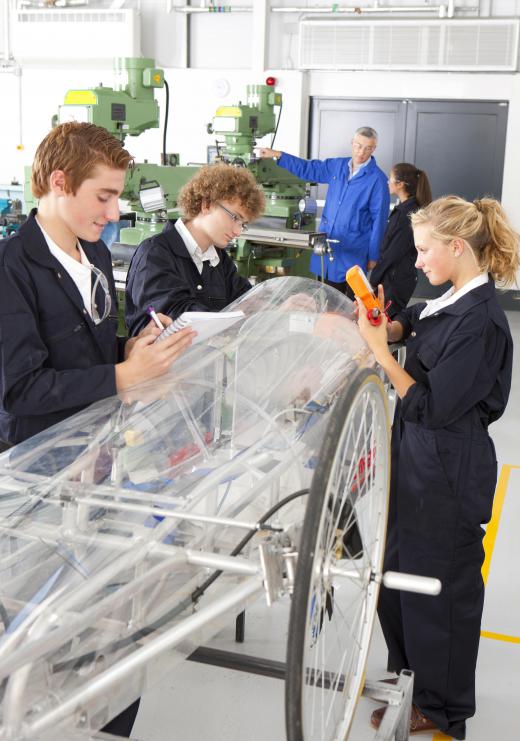A prototype is a model of a product which is used for testing before a manufacturing run is ordered. Many companies run through several prototypes when developing a new product, as they learn more about the manufacturing process, how people will use it, and how it can be broken. Typically, access to prototypes is limited to a very small number of people, since these early models of products are often extremely imperfect; in some cases, a limited release of a prototype may be released to beta testers, people who specialize in testing early versions of products and providing feedback.
Developing a prototype starts with the development of a concept for the product. For example, a company might want to create an innovative cellphone. Engineers and consultants work on the design features, typically producing several cardboard and paper models to illustrate how the product will look and feel. Once the development team is given the go-ahead, a single working prototype is created. This prototype is evaluated to determine how effective it is, and additional prototypes may be developed with different features as the design team responds to feedback.

Once a successful prototype has been developed, a company can use it as a model for full scale production. A prototype forms the manufacturing standard for the company; typically it is taken apart so that the parts can be carefully logged for duplication, and it may be put back together and preserved as it represents a historic development for the parent company. Once a prototype enters mass production, a company may choose a limited run to test the market response to the product before ordering it in high volume.

The concept of a prototype pre-dates the industrial age. As early as the 1600s, people were referring to the first and early forms of things as “prototypes,” and the sense of “prototype” as a standard of comparison developed around this time as well. The term comes from the Greek protos, which means “first” and typos, which means “impression.” In the 1600s, the “prototype” was often literally the first impression from a printing press, used by a printer to determine whether or not the inking and settings on the press were correct.

A common trait of many prototypes is that they are clunky, slow, and sometimes frustrating versions of the products that they will eventually turn into. When handling a prototype, it helps to remember that it is a working model, and substantial changes may be made before the product is released. Because prototypes can create a negative impression, most companies try to keep them out of the hands of reviewers, to ensure that reviews are based on the actual product rather than buggy early incarnations.
Ever since she began contributing to the site several years ago, Mary has embraced the exciting challenge of being a About Mechanics researcher and writer. Mary has a liberal arts degree from Goddard College and spends her free time reading, cooking, and exploring the great outdoors.

